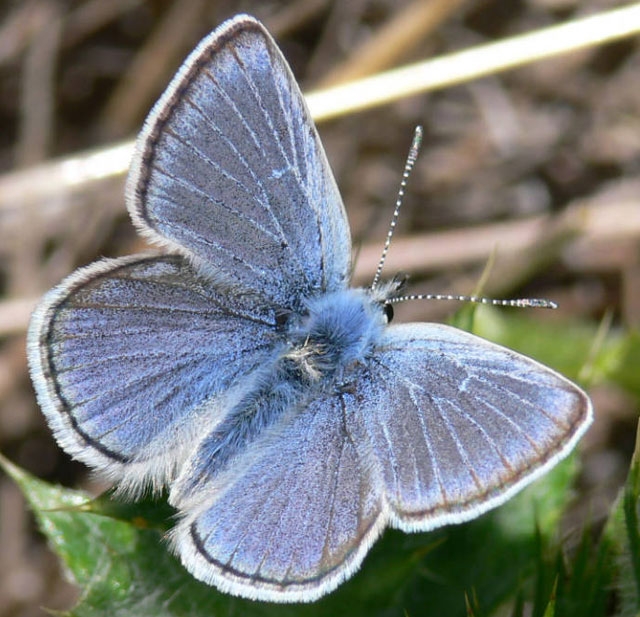Mission Blue Butterfly
A great deal of effort is being focused on saving a small blue butterfly. Why should we care whether this butterfly survives? Because, if humans can save the mission blue butterfly from extinction, there may be hope for other species that have been impacted by the loss of native grasslands due to human development.
I recently attended a presentation given by Price Sheppy, the Marin Program Manager of the Golden Gate National Parks Conservancy (GGNPC), about the Mission Blue Butterfly Project. The plight of this fascinating butterfly reflects the environmental impact that human development has had on all indigenous wildlife. The mission blue butterfly is small – about the size of a quarter – and adults live for only 10 days. They were first discovered in San Francisco in 1937, and were placed on the federal endangered species list in 1976.
Like many butterflies, the larva of the mission blue feed on only one food source; native California lupines. The larvae, which hatch in mid-March through early July only eat the leaves of silver lupine (Lupinus albifrons), summer lupine (Lupinus formosus), and varicolor lupine (Lupinus variicolor). After hatching, the tiny, green caterpillars spend three weeks voraciously feeding on the leaves of the lupine. Afterward, they wait out most of the year in leaf debris, in a hibernation state called diapause. During diapause, when the caterpillars are highly vulnerable, they are protected from predators by native ant species. The ants surround and cover the caterpillars, and fight off foes. In return, the ants are provided with a sugary honeydew, obtained by “milking” the hibernating caterpillar.
When the lupine are again in season, the caterpillars feed for another four to five weeks before becoming pupae. During the pupae stage, which lasts for one week, the caterpillars transform into a primordial goo, and eventually emerge as adult butterflies.
At one time, large numbers of mission blue butterflies thrived throughout Marin County and the San Francisco peninsula. Now, approximately 25,000 live in small, fragmented spots in Marin, San Francisco, and San Mateo counties. The GGNPC, in conjunction with California Garden Clubs, Inc., is working to restore the environment where the butterfly is found, by removing invasive plants, and replanting native species. Through trial and error, they have developed a method of growing lupine – notoriously difficult to grow - from seed. Their work is beneficial to other native California wildlife, whose survival depends on native plants. The GGNPC is also working with local school children to create pathways of lupine and native grasses between the disparate butterfly colonies. This will enable the butterflies to interbreed and strengthen the genetic pool.
For more information on the mission blue butterfly, and the work being done to save them, visit: http://www.parksconservancy.org/conservation/plants-animals/endangered-species/mission-blue-butterfly.html, or http://www.sfnps.org/mission_blues.

Mission Blue butterfly (photo from baynature.org)


Posted by Launa Herrmann on October 20, 2017 at 3:03 PM